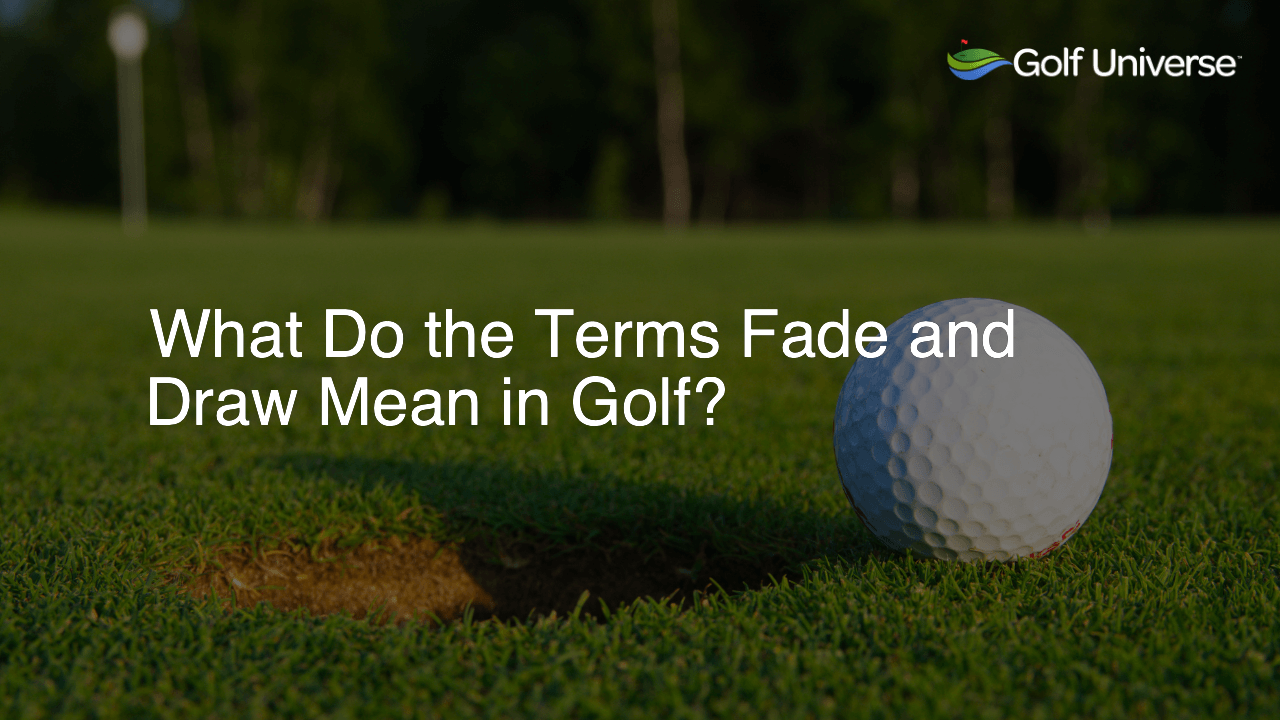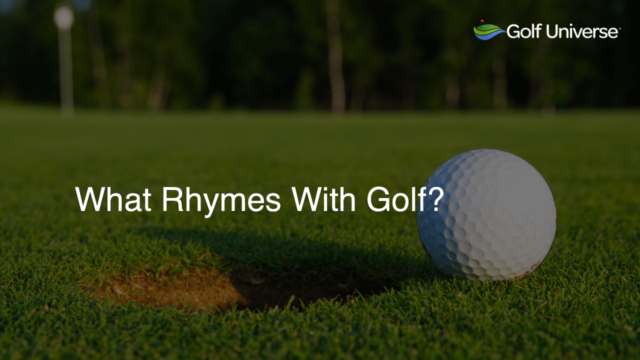In golf, ‘fade’ and ‘draw’ are shot shapes influencing the ball’s trajectory. A fade curves the ball gently from left to right for a right-handed golfer (opposite for left-handed), while a draw curves it from right to left (again, opposite for left-handed). These shots are executed by adjusting clubface angle and swing path, and provide tactical advantages by maneuvering around obstacles or altering shot distance.
Fade and Draw: Golf Shot Techniques
In golf, understanding various shot shapes can greatly improve a player’s ability to navigate the course and adapt to different situations. Two of the most commonly used shot shapes are the fade and the draw. This article will delve deeper into these terms, shedding light on their significance and execution.
Defining Fade and Draw in Golf
A fade in golf refers to a shot where the ball gently curves from left to right (for right-handed golfers) or from right to left (for left-handed golfers). This technique is often employed to avoid obstacles, such as trees or bunkers, or to better position the ball on the green for an easier putt. On the other hand, a draw is a shot that curves from right to left (for right-handed golfers) or from left to right (for left-handed golfers). Draws tend to result in longer shots and can be useful for gaining extra distance or getting around doglegs in the fairway.
Executing Fade and Draw Shots
Clubface Angle and Swing Path
To hit a fade or draw, golfers need to adjust two key elements of their swing: clubface angle and swing path. The clubface angle determines the initial direction of the shot, while the swing path dictates the curvature the ball will take in the air.
How to Hit a Fade
To execute a fade, a golfer should aim to have an “open” clubface – meaning the clubface is slightly pointed to the right (for right-handed golfers) or to the left (for left-handed golfers) of the target. In addition, the swing path should follow an “in-to-out” direction, as this generates the required sidespin to bend the ball from left to right (for right-handed golfers) or right to left (for left-handed golfers).
How to Hit a Draw
For a draw, the process is reversed. The clubface angle should be “closed” – slightly pointing to the left (for right-handed golfers) or to the right (for left-handed golfers) of the target. The swing path should follow an “out-to-in” direction, generating sidespin that curves the ball from right to left (for right-handed golfers) or left to right (for left-handed golfers).
Strategic Use of Fades and Draws
While fades and draws are not applicable in every situation, understanding and employing these shot shapes can provide golfers with an added level of on-course flexibility. Golfers can use fades to control distance and landing angles or draws to maximize distance by better utilizing the fairway. With shot-shaping knowledge and practice, golfers can create better scoring opportunities by strategically overcoming the challenges presented by the golf course.
The Importance of Practicing Fades and Draws
As any seasoned golfer would know, practice truly makes perfect. The same principle applies to perfecting the fade and draw shots. Golf Universe, a blog about golf, highly recommends investing time in learning these invaluable shot techniques; doing so will eventually lead to lower scores and increased enjoyment on the golf course.
Golf Universe Tips for Practicing Fades and Draws
At Golf Universe, we have a few tips that can make practicing fades and draws more effective:
- Begin with half-swings: Starting with shorter, more controlled swings will help obtain a better understanding of the adjustments required for fade and draw shots before moving on to full swings.
- Use alignment sticks: Placing alignment sticks on the ground, both for your stance and your target line, reinforces proper alignment and helps visualize the required swing path.
- Monitor ball flight: Observing ball flight patterns during practice will help identify tendencies and any required adjustments.
- Vary targets: Practice hitting fades and draws to various targets to enhance versatility and adaptability on the golf course.
By utilizing these tips and dedicating adequate practice time, golfers can significantly improve their shot-making abilities and overall course management skills.
Golf Universe’s Take on Equipment Selection
Another key factor that can aid in shot-shaping is finding the right equipment. Golf Universe believes selecting clubs that complement your skills will allow you to maximize their benefits on the course. For example, choosing a driver with optimal levels of adjustability can help fine-tune ball-flight characteristics, making it easier to control fades and draws. Additionally, shaft selections and custom-fit options can also contribute to better execution.
Remember that at Golf Universe, we are committed to helping golfers elevate their playing abilities and truly enjoy the game. Embracing the art of fades and draws, coupled with the appropriate equipment, will certainly unlock your potential on the golf course, ultimately leading to a more rewarding experience.
FAQ Section
Based on ‘What Do the Terms Fade and Draw Mean in Golf?’ blog post, we have compiled a list of frequently asked questions to provide brief and concise answers to common queries our readers may have.
What is the main difference between a fade and a draw?
The main difference is the trajectory of the ball: a fade curves from left to right for right-handed golfers (or right to left for left-handed), while a draw curves from right to left for right-handed golfers (or left to right for left-handed).
When should I use a fade or a draw?
Use a fade to bypass obstacles, control distance, or position the ball better on the green. Use a draw to gain extra distance or maneuver around doglegs in the fairway. Choose based on the situation and the course layout.
What factors impact my ability to execute a fade or draw?
Your clubface angle and swing path significantly influence fade and draw execution. Open clubface and in-to-out swing path create a fade, while closed clubface and out-to-in swing path result in a draw.
Can the right golf equipment improve my shot shaping?
Yes, the right golf equipment can enhance your shot-shaping ability. Selecting clubs with adjustment options and using custom-fit shafts can help control fades and draws more effectively.
How can I practice fades and draws effectively?
Begin with half-swings and use alignment sticks to enforce proper posture and swing path. Monitor ball flight patterns and vary your targets while practicing to improve overall shot-shaping skills.










